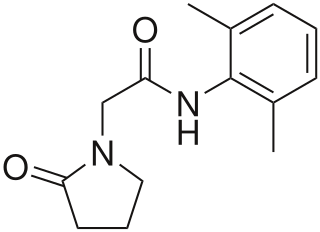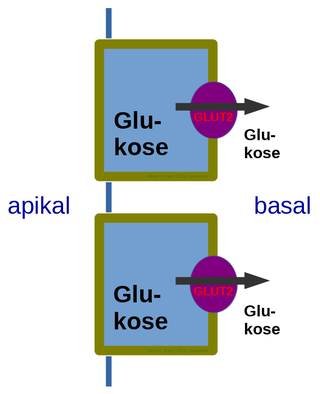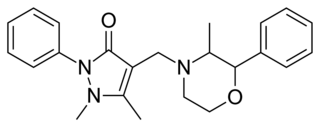
Uremia is the term for high levels of urea in the blood. Urea is one of the primary components of urine. It can be defined as an excess in the blood of amino acid and protein metabolism end products, such as urea and creatinine, which would be normally excreted in the urine. Uremic syndrome can be defined as the terminal clinical manifestation of kidney failure. It is the signs, symptoms and results from laboratory tests which result from inadequate excretory, regulatory, and endocrine function of the kidneys. Both uremia and uremic syndrome have been used interchangeably to denote a very high plasma urea concentration that is the result of renal failure. The former denotation will be used for the rest of the article.

Prednisone is a glucocorticoid medication mostly used to suppress the immune system and decrease inflammation in conditions such as asthma, COPD, and rheumatologic diseases. It is also used to treat high blood calcium due to cancer and adrenal insufficiency along with other steroids. It is taken by mouth.

Nootropics are numerous natural, semi-synthetic and synthetic molecules which purportedly improve cognitive functions.

Piracetam is a drug marketed as a treatment for myoclonus. It is also used as a cognitive enhancer to improve memory, attention, and learning. Evidence to support its use is unclear, with some studies showing modest benefits in specific populations and others showing minimal or no benefit. Piracetam is sold as a medication in many European countries. Sale of piracetam is not illegal in the United States, although it is not regulated nor approved by the FDA so it is legally sold for research use only.

Aniracetam, also known as N-anisoyl-2-pyrrolidinone, is a racetam which is sold in Europe as a prescription drug. It is not approved by the Food and Drug Administration for use in the United States as a prescription medication or dietary supplement. Despite the FDA's lack of approval, the drug is readily available over-the-counter in misbranded dietary supplements.

Oxiracetam is a nootropic drug of the racetam family and a very mild stimulant. Several studies suggest that the substance is safe even when high doses are consumed for a long period of time. However, the mechanism of action of the racetam drug family is still a matter of research. Oxiracetam is not approved by Food and Drug Administration for any medical use in the United States.

Nefiracetam is a nootropic drug of the racetam family. Preliminary research suggests that it may possess certain antidementia properties in rats.

Morphine-6-glucuronide (M6G) is a major active metabolite of morphine. M6G is formed from morphine by the enzyme UGT2B7. It has analgesic effects more potent than morphine. M6G can accumulate to toxic levels in kidney failure.

Glucose transporter 2 (GLUT2) also known as solute carrier family 2, member 2 (SLC2A2) is a transmembrane carrier protein that enables protein facilitated glucose movement across cell membranes. It is the principal transporter for transfer of glucose between liver and blood Unlike GLUT4, it does not rely on insulin for facilitated diffusion.

Atracurium besilate, also known as atracurium besylate, is a medication used in addition to other medications to provide skeletal muscle relaxation during surgery or mechanical ventilation. It can also be used to help with endotracheal intubation but suxamethonium (succinylcholine) is generally preferred if this needs to be done quickly. It is given by injection into a vein. Effects are greatest at about 4 minutes and last for up to an hour.

Acecainide is an antiarrhythmic drug. Chemically, it is the N-acetylated metabolite of procainamide. It is a Class III antiarrhythmic agent, whereas procainamide is a Class Ia antiarrhythmic drug. It is only partially as active as procainamide; when checking levels, both must be included in the final calculation.

Dipeptidase 1 (DPEP1), or renal dipeptidase, is a membrane-bound glycoprotein responsible for hydrolyzing dipeptides. It is found in the microsomal fraction of the porcine kidney cortex. It exists as a disulfide-linked homodimer that is glygosylphosphatidylinositol (GPI)-anchored to the renal brush border of the kidney. The active site on each homodimer is made up of a barrel subunit with binuclear zinc ions that are bridged by the Gly125 side-chain located at the bottom of the barrel.

Eseroline is a drug which acts as an opioid agonist. It is a metabolite of the acetylcholinesterase inhibitor physostigmine but unlike physostigmine, the acetylcholinesterase inhibition produced by eseroline is weak and easily reversible, and it produces fairly potent analgesic effects mediated through the μ-opioid receptor. This mixture of activities gives eseroline an unusual pharmacological profile, although its uses are limited by side effects such as respiratory depression and neurotoxicity.

Potassium voltage-gated channel subfamily A member 10 also known as Kv1.8 is a protein that in humans is encoded by the KCNA10 gene. The protein encoded by this gene is a voltage-gated potassium channel subunit.

Morazone is a nonsteroidal anti-inflammatory drug (NSAID), originally developed by the German pharmaceutical company Ravensberg in the 1950s, which is used as an analgesic. It produces phenmetrazine as a major metabolite and has been reported to have been abused as a recreational drug in the past.

Ozolinone is a loop diuretic which was never marketed.

Phenylpiracetam hydrazide, also known as fonturacetam hydrazide, is a racetam that is a derivative of phenylpiracetam in which the amide group is replaced with a hydrazide group. It was first reported by a Russian research group in 1980 as part of a series of chemical compounds investigated as anticonvulsants. In an electroshock test it was found to have an ED50 of 310 mg/kg.

7α-Thiomethylspironolactone is a steroidal antimineralocorticoid and antiandrogen of the spirolactone group and the major active metabolite of spironolactone. Other important metabolites of spironolactone include 7α-thiospironolactone, 6β-hydroxy-7α-thiomethylspironolactone (6β-OH-7α-TMS), and canrenone (SC-9376).

Indoxyl sulfate, also known as 3-indoxylsulfate and 3-indoxylsulfuric acid, is a metabolite of dietary L-tryptophan that acts as a cardiotoxin and uremic toxin. High concentrations of indoxyl sulfate in blood plasma are known to be associated with the development and progression of chronic kidney disease and vascular disease in humans. As a uremic toxin, it stimulates glomerular sclerosis and renal interstitial fibrosis.

Metapristone is the major metabolite of mifepristone and a selective progesterone receptor modulator (SPRM) which itself was never marketed. It is formed from mifepristone in the liver by the enzyme CYP3A4 via monodemethylation, and circulates at concentrations higher than those of mifepristone. The metabolite retains partial but considerable affinity for the progesterone receptor (PR) and the glucocorticoid receptor (GR). On the basis of actions that are apparently independent of its hormonal activity, metapristone is being researched as a potential cancer metastatic chemopreventive agent.




















